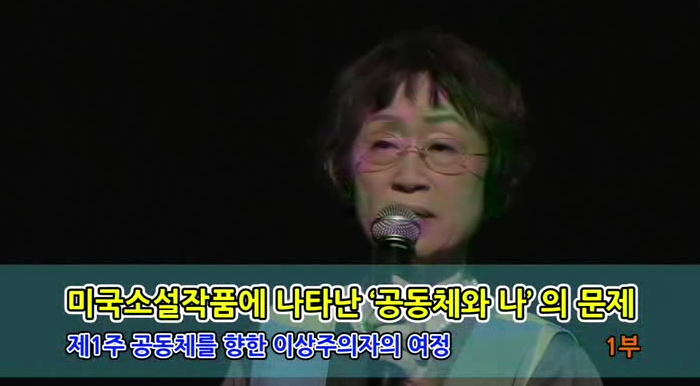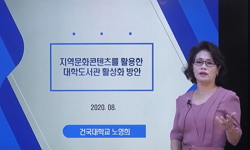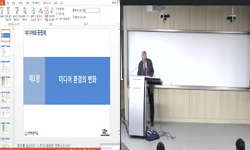지난 3월 문화체육관광부는 ‘지역문화정책 추진전략’을 발표하며 ‘문화의 힘으로 지역소멸을 막겠다’고 하였다. 이러한 표현은 2014년 국내 도시개발 패러다임이 도시재생으로 바뀐 이...
http://chineseinput.net/에서 pinyin(병음)방식으로 중국어를 변환할 수 있습니다.
변환된 중국어를 복사하여 사용하시면 됩니다.
- 中文 을 입력하시려면 zhongwen을 입력하시고 space를누르시면됩니다.
- 北京 을 입력하시려면 beijing을 입력하시고 space를 누르시면 됩니다.
유휴공간 문화재생에 관한 연구 : 생활문화센터를 중심으로 = A Study on the Cultural Regeneration of Idle Space - Focusing on the Living Culture Center -
한글로보기https://www.riss.kr/link?id=T16865542
- 저자
-
발행사항
서울 : 서울대학교 대학원, 2023
-
학위논문사항
학위논문(석사) -- 서울대학교 대학원 , 환경계획학과 도시사회혁신 , 2023. 8
-
발행연도
2023
-
작성언어
한국어
- 주제어
-
DDC
711
-
발행국(도시)
서울
-
형태사항
ⅷ, 89 ; 26 cm
-
일반주기명
지도교수: 김부열
-
UCI식별코드
I804:11032-000000179068
- DOI식별코드
- 소장기관
-
0
상세조회 -
0
다운로드
부가정보
국문 초록 (Abstract)
지난 3월 문화체육관광부는 ‘지역문화정책 추진전략’을 발표하며 ‘문화의 힘으로 지역소멸을 막겠다’고 하였다. 이러한 표현은 2014년 국내 도시개발 패러다임이 도시재생으로 바뀐 이후 ‘문화를 통한 인식 제고’, ‘문화를 통한 공동체 회복’, ‘문화를 통한 도시재생’처럼 여러 정책에 자주 등장한다.
우리나라는 90년대 지방자치제도가 본격화되면서 비수도권 지역에 대한 문화 격차 해소에 대한 논의가 시작되었는데, 이후 2014년 「문화기본법」과 「지역문화진흥법」이 제정되면서 국민의 더욱 능동적인 참여를 강조하는 ‘문화 민주주의’로 문화정책의 패러다임이 바뀌었다. 이 과정에서 문화기본권과 문화 민주주의의 개념이 지역사회의 발전과 지역 공동체의 회복이라는 차원에서 매우 중요한 요소로 자리 잡으며, 문화를 통해 지역을 되살리겠다는 수사적 표현이 관성적으로 굳어지게 된 것이다. 수도권 집중 현상과 지역 쇠퇴로 오랫동안 방치된 유휴공간이 사회문제가 되면서 유휴공간 문화재생이 이를 해결하기 위한 대안으로 떠오르게 되었다.
2014년부터 조성되기 시작한 생활문화센터는 ‘기존 문화시설 및 유휴공간을 활용하여 지역민의 문화여가 참여 및 생활문화예술 참여 접근성을 제고(문체부)’하기 위해 조성한 시설로, 유휴공간 문화재생의 대표적인 사례라고 할 수 있다. 하지만 9년 차에 접어든 생활문화 사업은 여전히 구체적인 성과를 내지 못하고 있다. 지역 활성화를 위해 도입된 생활문화 사업의 활성화 방안을 고민해야 하는 상황이다. 문화공간 조성으로 이미 쓸모를 다한 공간이 활기를 되찾을 수 있을지 재고해야 한다.
이에 본 연구는 생활문화센터를 통해 유휴공간의 문화적 활용이 지역사회에 미치는 영향을 알아보고자 하였다.
먼저, 이론적 고찰을 통해 문화정책에 광범위하게 사용되고 있는 문화재생의 개념을 파악하고, 생활문화와 도시재생 관련 제도적 흐름을 알아보았다. 그리고 생활문화센터 운영 현황을 살펴봄으로써 유휴공간 문화재생의 경향과 특징에 대하여 분석하였다. 또, 사례 조사 심층 분석을 통해 이러한 유휴공간 문화재생이 지역사회에 미치는 영향을 물리적 환경 개선, 주민 문화 향유 기회, 지역 공동체 활성화로 나누어 살펴보았다.
이를 위해 본 연구는 생활문화센터와 관련한 문헌 조사와 전국 173개 생활문화센터를 대상으로 사례 조사를 진행하였다.
분석 결과를 요약하면 다음과 같다. 첫째, 생활문화센터 75% 이상이 도시에 있으며, 도시 규모와 상관없이 비수도권-쇠퇴지역에 가장 많이 분포하는 것으로 나타났다. 생활문화센터는 도서관, 박물관, 미술관, 문예회관, 문화의집 등 다른 문화기반시설과 비교해 최근 증가율이 가장 높았으며, 다른 문화기반시설에 비해 비수도권 비율이 현저히 높은 것으로 나타났다. 이는 지역 간 문화 격차 완화를 위해 양적 확대에 치중한 결과로 볼 수 있다.
둘째, 생활문화센터의 운영 특성은 생활문화센터의 면적이나 예산의 편차는 컸으나, 운영 인력이나 프로그램 내용에는 별다른 차이가 없었다. 기존 문화시설과 유휴공간의 차이를 실증 분석한 결과 통계적으로 유의한 차이가 없었으며, 유휴공간의 정체성이나 특성을 살린 사례도 드물었다.
셋째, 생활문화센터가 지역사회에 미치는 영향은 대상 지역이나 생활문화에 대한 이해와 운영 주체의 역량에 따라 달라지는 것으로 나타났다. 생활문화센터는 지역의 애물단지인 노후화된 유휴공간을 활용하여 생활문화의 기반을 확충했다는 점에서 의미가 있으나, 내용적인 측면에서는 지역이나 운영 주체별로 차이가 있었다. 유휴공간도 대부분 역사·문화적 가치가 뛰어나서라기보다 단순히 쓸모를 다해 오래 방치된 공간이 대부분이었다. 타 문화시설 프로그램과 차별화된 내용도 거의 없고, 지역적 특성을 살린 프로그램도 많지 않았다.
유휴공간 문화재생이 성공하는 사례는 매우 드물다. 단순히 물리적 환경을 개선한다고 해서 저절로 활성화되는 것이 아니라, 차별화된 프로그램과 주민의 자발적인 참여, 적절한 행정력 등이 뒷받침되어야 하며, 참여 대상과 내용도 구체화하여야 한다. 점점 증가하는 유휴공간의 활용 방안도 더욱 다각화되어야 한다. ‘문화’라는 개념에 막연히 기댈 것이 아니라 계속해서 늘어나는 유휴공간을 어떻게 처리하는 것이 바람직한지, 지역사회에 그만큼 긍정적인 영향을 미치는지 숙고해야 한다.
본 연구는 생활문화센터를 중심으로 유휴공간 문화재생 사업의 배경과 문제점을 살펴보고, 실효성을 검토하였다. 문헌 조사와 사례 분석을 통해 생활문화센터 운영 및 유휴공간 문화재생 사업을 위한 정책적 함의를 도출하고 대안을 제시하였다는 점에서 정책적 의의가 있다.
다국어 초록 (Multilingual Abstract)
In March of this year, the Ministry of Culture, Sports, and Tourism announced its 'Local Cultural Policy Promotion Strategy,' stating that they would prevent regional extinction through the power of culture. Such expressions have been frequently used ...
In March of this year, the Ministry of Culture, Sports, and Tourism announced its 'Local Cultural Policy Promotion Strategy,' stating that they would prevent regional extinction through the power of culture. Such expressions have been frequently used in various policies since 2014, when the domestic urban development paradigm shifted to urban regeneration, emphasizing aspects such as 'enhancing awareness through culture,' 'community restoration through culture,' and 'urban regeneration through culture.‘
In the 1990s, with the establishment of the local autonomy system, discussions on bridging the cultural gap in non-metropolitan areas began. Subsequently, with the enactment of the "Basic Law on Culture" and the "Regional Culture Promotion Law" in 2014, the paradigm of cultural policy shifted towards "cultural democracy," which emphasizes more active citizen participation. In this process, the concept of cultural and cultural democracy played a decisive role in the development and restoration of the community, and the expression emphasizing the revival of the region through culture became inertial.
As the centralization of the metropolitan areas and the decline of local regions resulted in abandoned and idle spaces becoming social issues, the idea of revitalizing these idle spaces through cultural regeneration emerged as an alternative to address the problem.
Since 2014, the establishment of Living Culture Centers has been a representative case of revitalizing these idle spaces, aiming to enhance accessibility for local residents to participate in cultural and artistic activities by utilizing existing cultural facilities and idle spaces. However, even after nine years, the Living Culture Centers projects have not yet produced concrete results. As a result, there is a need to consider strategies to activate these projects introduced to revitalize local communities. We need to consider whether spaces that have lost their original purpose can regain vitality through the creation of cultural spaces.
This study aims to investigate the impact of utilizing idle spaces for cultural purposes through Living Culture Centers on local communities.
Firstly, through theoretical analysis, the study comprehended the concept of cultural regeneration widely used in cultural policies and explored the institutional flow related to community culture and urban regeneration. Subsequently, the operational status of Living Culture Centers was examined to analyze the trends and characteristics of cultural regeneration in idle spaces. Additionally, an in-depth analysis of case studies was conducted to examine the impact of such cultural revitalization of idle spaces on the local community in terms of physical environmental improvements, opportunities for residents to engage in cultural activities, and the activation of local communities.
To achieve this, the study conducted a literature review on Living Culture Centers and carried out case studies on 173 such centers nationwide. The summarized results of the analysis are as follows:
Firstly, more than 75% of Living Culture Centers are located in urban areas, and regardless of the size of the city, they are most prevalent in non-metropolitan and declining regions. Living Culture Centers have shown the highest recent growth rate compared to other cultural infrastructure facilities such as libraries, museums, art galleries, cultural centers, etc., and they have a significantly higher proportion in non-metropolitan areas compared to other cultural infrastructure. This is attributed to the fact that the focus was on quantitative expansion to bridge the cultural gap between regions.
Secondly, the operational characteristics of Living Culture Centers showed variations in terms of area and budget, but there were no significant differences in terms of operating personnel and program content. Empirical analysis comparing Living Culture Centers with existing cultural facilities and idle spaces revealed no statistically significant differences, and there were few cases that incorporated the identity or characteristics of idle spaces into their programs.
Thirdly, the impact of Living Culture Centers on local communities varied depending on the target area and the understanding of community culture, as well as the capabilities of the operating organization. While Living Culture Centers contributed to strengthening the foundation of community culture by utilizing old and idle spaces, the content and effects of these centers varied depending on the region and the organization responsible for their operation. Most of the idle spaces did not possess exceptional historical or cultural value but were simply spaces that had been left unused for an extended period. There were few distinctive programs compared to other cultural facilities, and not many programs were tailored to reflect the local characteristics.
The success of revitalizing idle spaces through cultural regeneration is quite rare. Merely improving the physical environment does not automatically lead to activation, but also requires differentiated programs, voluntary participation of residents, proper administrative support, and specific definitions of target groups and contents. Moreover, the utilization of the increasing idle spaces needs to be more diversified. It is essential to contemplate how to handle the continuously increasing idle spaces in a positive effect on local communities, rather than relying on the vague concept of ‘culture’.
This study focuses on Living Culture Centers and examines the background and issues of idle space cultural regeneration projects, evaluating their effectiveness. Through literature review and case analysis, the study derives policy implications for operating Living Culture Centers and revitalizing idle spaces through cultural projects. The study's policy implications hold significant value in terms of suggesting alternatives and strategies for Living Culture Center operations and idle space cultural regeneration projects.
목차 (Table of Contents)
- 제1장 서론 1
- 1. 연구 배경 및 목적 1
- 1) 연구 배경 1
- 2) 연구 목적 4
- 2. 연구 범위 및 방법 6
- 제1장 서론 1
- 1. 연구 배경 및 목적 1
- 1) 연구 배경 1
- 2) 연구 목적 4
- 2. 연구 범위 및 방법 6
- 1) 연구 대상 및 범위 6
- 2) 연구 방법 7
- 3. 연구 구성 8
- 제2장 이론적 고찰 및 선행연구 검토 9
- 1. 이론적 배경 9
- 1) 문화기본권과 문화정책 패러다임의 변화 9
- 2) 지역문화와 지역 공동체 11
- 3) 도시재생 13
- 4) 생활문화 14
- 2. 선행 연구 검토 18
- 1) 생활문화 18
- 2) 생활문화 사업 성과분석 21
- 3) 문화재생 22
- 3. 연구의 필요성 24
- 제3장 연구 방법 25
- 1. 분석의 틀 25
- 2. 연구 대상 26
- 3. 자료 수집 27
- 1) 문헌 조사 27
- 2) 사례 조사 27
- 4. 자료 분석 28
- 제4장 생활문화센터 일반 현황 29
- 1. 문화기반시설 29
- 1) 문화기반시설의 정의 29
- 2) 전국 문화기반시설 현황 29
- 2. 생활문화센터 33
- 1) 설립 취지 및 개요 33
- 2) 일반 현황 34
- 3) 공간 조성 방식 36
- 4) 지역 특성별 현황 37
- 5) 운영 특성별 현황 40
- 6) 기초 통계 42
- 7) 기존 문화시설과 유휴공간의 차이 44
- 8) 주요 사업 내용 45
- 9) 문제점 47
- 제5장 연구 결과 49
- 1. 문헌 조사 49
- 1) 노후화된 유휴공간 개선 49
- 2) 주민 문화 향유 기회 확대 53
- 3) 공동체 활성화 및 지역 문제 해결 57
- 2. 사례 조사 61
- 1) 경기 상상캠퍼스 61
- 2) 백산 생활문화센터 67
- 3. 소결 69
- 제6장 결론 70
- 1. 요약 및 결론 70
- 2. 정책적 함의 72
- 3. 연구의 의의 및 한계 75
- 부록 76
- 참고 문헌 83
- Abstract 86












